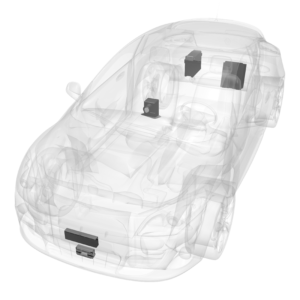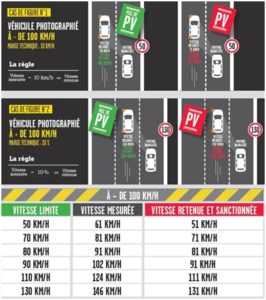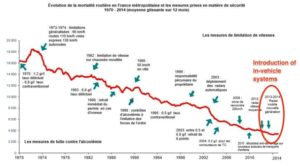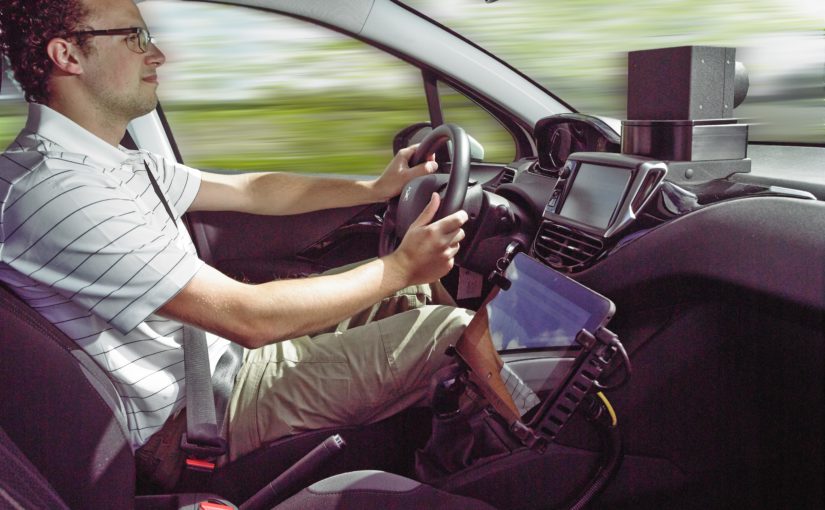The benefits of automated in-vehicle traffic enforcement
The past few years have seen great interest by various governments in automated in-vehicle traffic enforcement to further increase road safety and to intensify speed enforcement extending it to all road types and all corners of the country. France, which already uses a wide portfolio of traffic enforcement technologies*, was the first country to implement these automated in-vehicle traffic enforcement systems in unmarked police patrol cars on a large scale, with remarkable road safety benefits.
Automated in-vehicle traffic enforcement
The road safety benefits of enforcement are optimised if the subjective chance of apprehension is maximised*. For speed enforcement this means that drivers and riders are given the impression that they can be checked for speeding any time and at any place of the road network. This feeling will maximise driver compliance with the local speed regime provided the penalties (mostly fines and driving license points) are felt to act as a strong deterrent. Besides the visible and invisible enforcement effort on the road and actual number of violations issued, it is important to recognise that this impression is strongly influenced by continuous publicity in various traditional and social media on enforcement activities and its results, both in violations issued and road safety improvement realised. Enforcement cannot be successful without effective publicity.
The road safety effect of spot speed enforcement cameras could be limited for several reasons. It often results in a locational and this temporary speed reduction for drivers familiar with the road and thus with the camera locations. Many drivers will slow down before, and will speed up again after passing a speed camera, resulting in the so-called ‘kangaroo effect’. Moreover, these days drivers are warned about the location of speed cameras through navigation systems, smart phones and radio warnings, thus further undermining the road safety effect of these devices. This has resulted in legislation e.g. in France and Switzerland , which prohibits drivers from using devices that ‘assist’ them by giving information on the location of enforcement cameras, with fines of up to €1,500 in France.

Simultaneously addressing the ‘kangaroo effect’ and subjective chance of being caught
Both the kangaroo effect and the issue ‘increasing the subjective chance of apprehension’ can be addressed with mobile enforcement cameras mounted on tripods or operated from parked police vehicles at crash risk locations. In many countries spot speed cameras along motorways and secondary roads are being replaced by average speed or section control systems where average vehicle speeds can be measured over longer distances. The road safety benefits of such average speed enforcement systems are very encouraging. Optimal locational flexibility comes from unmarked in-vehicle systems that can be operated in both driving and parked modes while detecting violations from both approaching and receding traffic.
These systems maximise geographic enforcement coverage, do not generate a kangaroo effect and contribute to maximising the subjective chance of apprehension. In 2013 the French authorities launched these automated in-vehicle traffic enforcement systems in sync with a massive multi-media publicity campaign and currently operate a fleet of close to 400 unmarked enforcement vehicles.

The combination of advanced applied technology with an effective multi-media publicity campaign instantly had a very positive effect on road safety. Potential speeders do not know where these roughly 400 patrol cars are operating and, if they want to avoid a speeding ticket, are thus very likely to comply to the posted speed limit. These invisible police vehicles, operating as bi-directional mobile speed cameras, are thus a classic example of how to maximise both the subjective chance of apprehension and geographical coverage, while avoiding the kangaroo effect. Since their introduction in France they have contributed to further improving road safety significantly as can be seen from the graph below.

Conclusion
The ‘kangaroo effect’ and not being able to increase ‘the subjective chance of apprehension’ are issues that come up due to the known location of fixed spot speed cameras. These issues can be addressed with average speed enforcement systems, mobile enforcement cameras mounted on tripods or operated from stationary police vehicles and unmarked automated in-vehicle traffic enforcement systems. The unmarked in-vehicle systems, extensively used in France, have proven to be most effective due to their concealed nature, flexible, mobile, bi-directional and ‘while driving’ operation mode, and the fact that they can be used on the highest risk secondary roads at locations all over the country. Through the successful publicity campaign virtually all drivers are aware of these vehicles, therefore further adding to increasing the subjective chance of apprehension, reducing average driving speed across the road network and thus improving road safety.
References
* Enforcement equipment in France: http://www.securite-routiere.gouv.fr/connaitre-les-regles/les-radars
* Nouvier, J. et al. (2006). Speed Management. OECD/European Conference of Ministers of Transport, Paris, France.

in your opinion what is the current best availabe In Car traffic speed enforcement system? Provida?
Dear James,
Thanks for your question. There are several systems available. It really depends on the purpose. Provida is often seen for manual enforcement when the police officer stops and confronts the driver with his/her violation by showing the violation in a video in the police car. This should have a good deterring effect, but is quite labour intensive and the police is a valuable resource that should be used efficiently. Sensys Gatso has a system that provides automated enforcement and can be used both while driving and in a stationary mode. Moreover, it can enforce both receding and approaching traffic. It can be used in an overt (marked police car) or covert (regular car used by police) way. Violations are recorded and violation / fine notifications are send to the owner of the vehicle by SMS or post. This is a very efficient operation and has shown very good road safety benefits in many countries where the system is in use. This video gives a good idea of the enforcement operation of this system: https://www.youtube.com/watch?v=10KUG4kdNZ8
Let me know if you have any further questions.
Best regards,
Philip Wijers